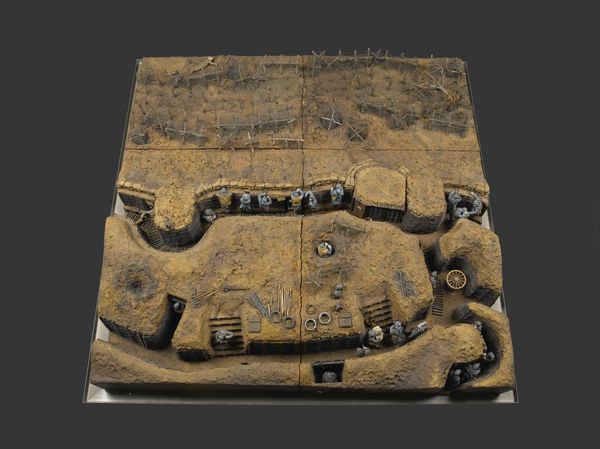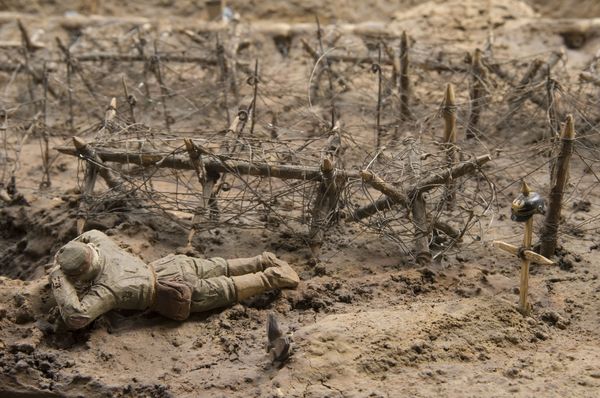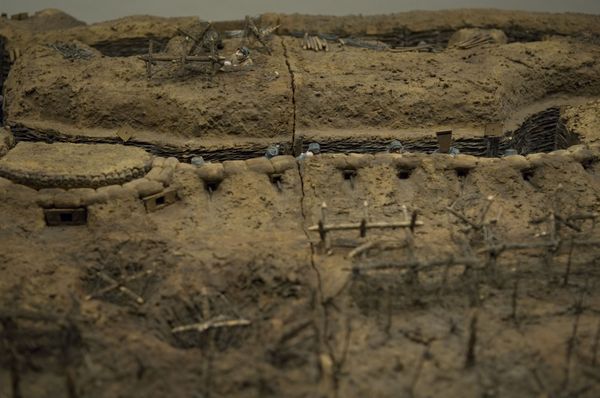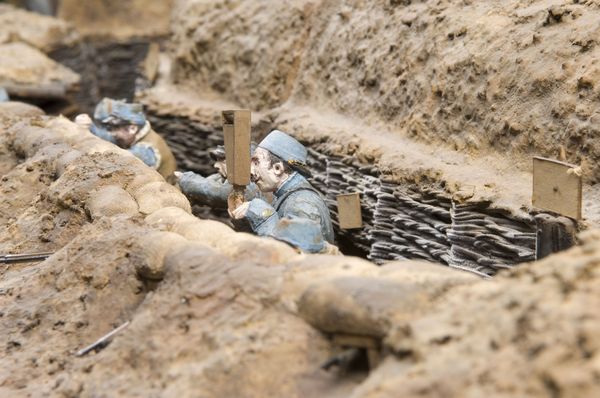
Model of a trench
This model of the front line of the trenches was begun by a French officer in 1915 while in captivity and was completed at the end of the war. It helps to capture and describe the harrowing atmosphere of siege or trench warfare that prevailed between late 1914 and March 1918.
About the work

While the beginning of the Great War was marked by the war of movement, especially on the western front, the belligerent countries soon understood the deadly impact of machine guns and artillery. To escape the catastrophic effects of shelling and to hold their lines, armies dug trenches to protect their soldiers.
The overall view of the model of the trench shows us how close the enemy sometimes was on the front, just a few hundred or even a few dozen yards away.
Between the armies was "no man's land", with its shell holes and unburied bodies, since it was too dangerous to bury them and risk attracting enemy fire.

This was real siege warfare with a series of trenches several miles deep and linked by tunnels. They formed a continuous front through France and Belgium that neither side managed to break for almost four years.

Soldiers spent long hours watching and waiting, because the enemy might attack at any moment. The material conditions and the effect on morale were extreme. Rain turned the earth to mud, cold brought frost and heat made the men parched with thirst. The soldiers also suffered from the long months of separation with their families.

Label
Inventory no. : 13506
Author : Captain Reboud
Materials: Wood, string, metal, paint, plaster
Techniques: Model (1/20th)
History : Donated by Mrs Barat-Reboud (1957)
Place of creation : Germany ?